The key to lower customer acquisition costs (8 specific tactics)
Reducing customer acquisition costs (CAC) has become a key goal for businesses over the last few years. Unfortunately, many teams struggle to achieve that due to tough competition, increasing marketing costs, and outdated technologies and approaches.
Updated on 15 Nov 2024
While there’s no universal way to slash CAC for all businesses, channels, and use cases, most of the proven tactics are based on the principles of personalization, i.e., tailoring everything that users see to their needs, interests, and preferences.
Personalization ensures you always reach anonymous visitors, leads, and customers with relevant ads, content, messaging, and product recommendations. This leads to higher engagement, better conversion rates, and as a result — lower CAC.
In this guide, we’ll explore how to lower customer acquisition costs by covering the following:
- What CAC is and how it’s calculated.
- Why personalization is the essential factor for lowering CAC.
- 7 Proven tactics for reducing CAC across different channels and strategies.
We’ll also show examples of how Insider — our omnichannel experience and customer engagement platform — has helped brands lower CAC, improve conversion rates, and generate more revenue.
If you want to learn more about Insider, visit our website or see the platform in action.
What is customer acquisition cost (CAC) and how is it calculated?
Customer acquisition cost (CAC) is the expense a company incurs to acquire a new customer. This can include advertising and promotional costs, spending on other marketing campaigns (e.g., on social media or SEO), as well as salaries for marketers and salespeople.
CAC is calculated by dividing these total costs by the number of new customers acquired. Businesses typically perform this calculation for a specific period, like one month or quarter to keep track of the vital relationship between what they spend and the customers they attract.
Lowering CAC or even keeping it steady over time is often a sign of effective marketing and sales tactics.
Personalization: The essential factor for lowing customer acquisition costs
Many businesses today use some form of personalization, like including customers’ names in email marketing campaigns, celebrating milestones like birthdays and anniversaries, or reminding leads to complete a sign-up form.
While useful, none of these tactics alone can tap into the full potential of personalization, especially when it comes to reducing CAC. True personalization at scale means delivering a tailored experience across all touchpoints and phases of the customer lifecycle.
Doing that is crucial for minimizing CAC, making the most out of your marketing spend, and improving other metrics like average order value (AOV) and customer lifetime value (CLTV).
For example, say you have an eCommerce business that sells products across various categories and price points. Using generic ads and product recommendations for your entire audience will yield poor results, as they’ll be irrelevant to many users.
Instead, marketers should focus on personalizing the customer experience by:
- Segmenting website visitors, leads, and customers based on behaviors, needs, interests, and predictive characteristics for more accurate targeting.
- Getting visitors back to the site by showing them online ads and web push notifications for products they’ve already browsed or added to their carts.
- Tailoring the on-site experience with personalized product recommendations, banners, categories, and site search results for every individual visitor.
- Building automated campaigns across email and other channels where each message contains personalized content and is triggered at the time and on the touchpoint that’s most likely to deliver results.
This ensures each website visitor, lead, and customer is always seeing relevant content, messaging, and product recommendations.
As a result, a much higher percentage of them are likely to convert, which brings down acquisition costs. It also leads to a better user experience, since people don’t have to navigate through content and products that aren’t a good fit for them.
You can find many real-life examples of using personalization as the basis of a solid customer acquisition strategy on our website. For example:
- MAXAROMA used personalized mobile stories to engage customers with relevant products and collaborations. These product recommendations generated a 75% return on investment (ROI), while the personalization program as a whole yielded $2.3 million in incremental revenue.
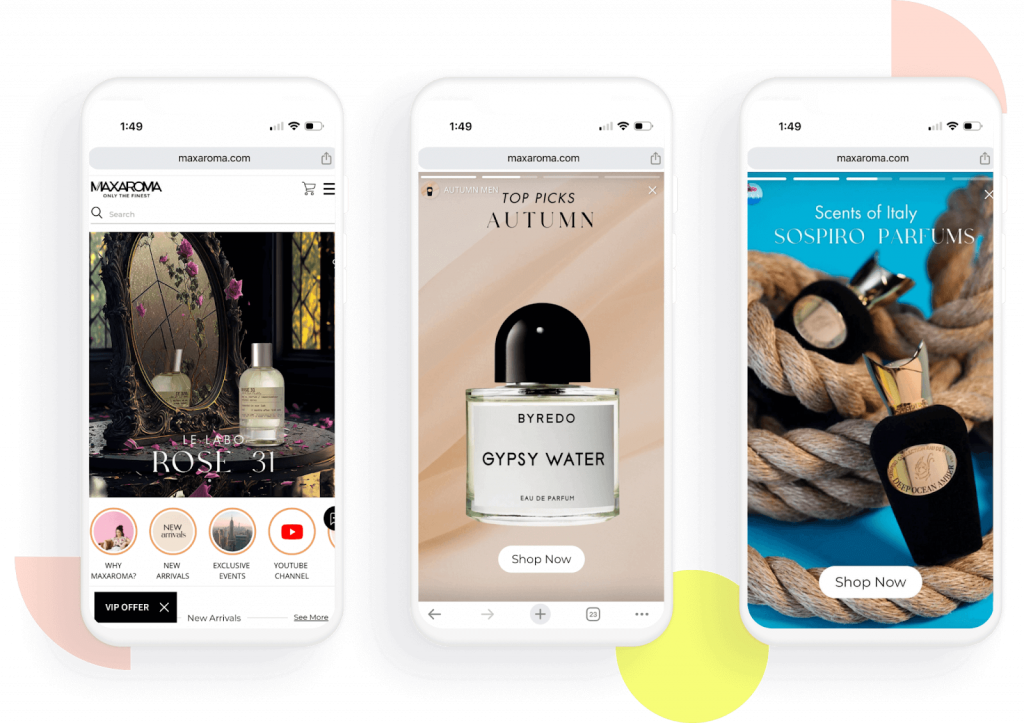
- AVON used different AI-powered personalization tools to convert more visitors into paying customers and optimize their website conversion rates. This included strategies like showing tailored product recommendations, using countdown bars to induce urgency, and more. Each strategy delivered over a 20% increase in conversions, with their personalized banners alone driving a 78% conversion boost.
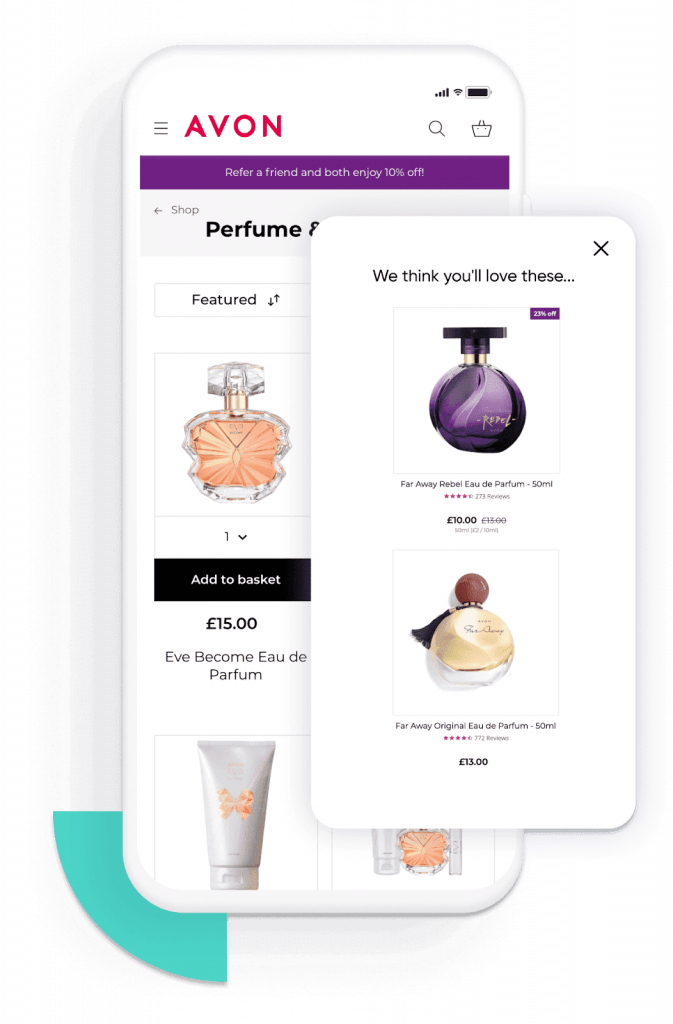
For more personalization strategies and examples, browse the other case studies on our website.
8 proven tactics for lowering customer acquisition costs
Now that you understand the importance of personalization, let’s discuss eight specific tactics for reducing CAC. Again, most of these are based on personalizing the user experience, so they require reliable data about website visits, locations, browsed products, interests, needs, and preferences.
#1 Traditional and predictive segmentation
Segmentation is an essential element of successful customer targeting. The ability to pinpoint and group customers based on shared behaviors is also at the core of delivering relevant marketing messages and, as a result — reducing CAC.
Brands have traditionally segmented customers based on known behaviors and characteristics, including users’ locations, demographics, browsing habits, previous purchases, and more.
However, AI-powered segmentation now gives marketers the ability to segment based on predicted behaviors, including:
- Discount affinity.
- Potential spending.
- Likelihood to purchase.
- Likelihood to engage on a specific channel.
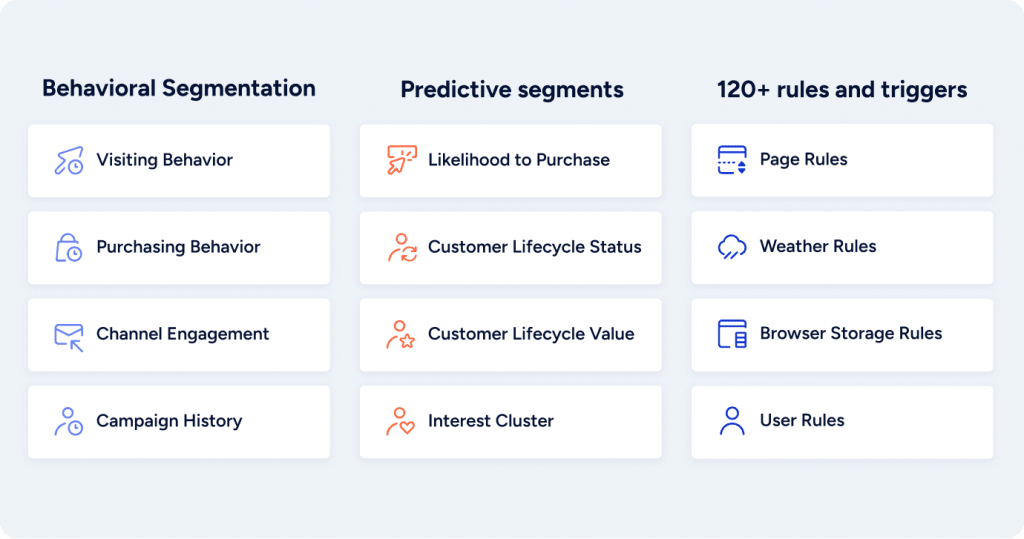
Adding these predictive marketing techniques to your arsenal is a powerful way to make your segments more specific. For example, you can use Insider’s AI-powered segmentation to build audiences like:
- Users who’ve shown interest in a specific product and have a high likelihood of engaging with WhatsApp messages.
- Users who are located in a specific geographic location and have a likelihood of purchasing.
- Users who have interacted with your brand on a specific channel (e.g., SMS or app push) and have a high discount affinity.
Put simply, detailed segmentation enables you to home in on the right audiences for all your marketing efforts. Besides helping you reduce CAC, this can have a massive impact on other metrics like conversion rates, AOV, and CLTV.
#2 Retargeting with hyper-personalized online ads
Retargeting is a well-known technique that lets businesses remind website visitors about a product or service they’ve browsed before. The process is simple — you use the behavioral data captured on your website to show users relevant ads that hopefully bring them back and get them to complete a purchase.
However, online ads have gotten much more expensive over the years. That’s why if you want to optimize your CAC and convert as many visitors as possible, you need to show relevant ads to highly specific audiences.
Say you have an eCommerce store that sells headphones. You can run standard remarketing campaigns by showing users ads for products they browsed and added to their carts.Additionally, you can take this concept to the next level by employing the predictive segmentation techniques we discussed in the previous section. For example, you can only target potential customers who have a high likelihood of purchasing or a high discount affinity (if you’re running a discount campaign).
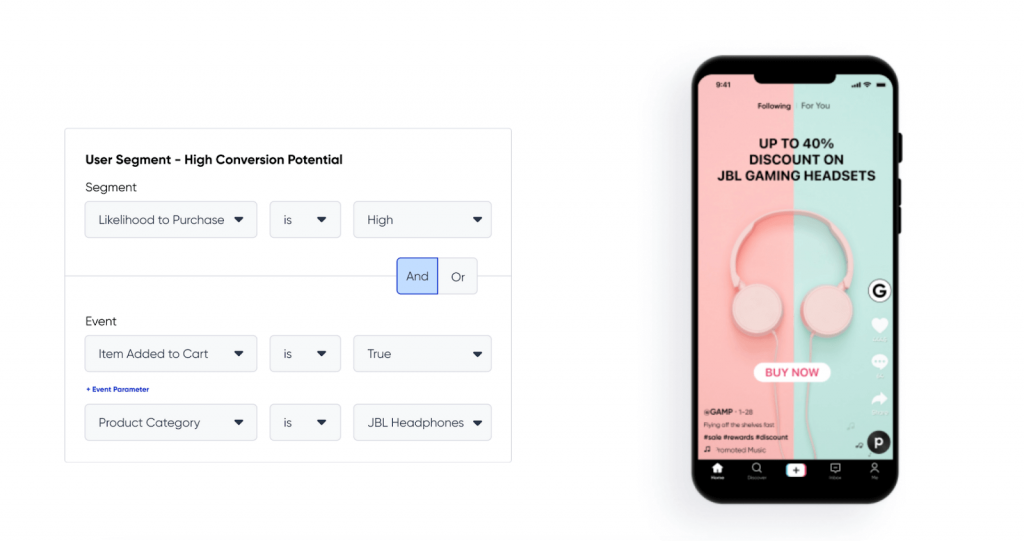
That way, you’re focusing your efforts and ad dollars only on the users who have the highest chance of buying your product. Again, this is easy to do with a platform like Insider that has simple integrations with all major ad networks — including Google Ads, Facebook Ads, and TikTok.
Pierre Cardin used this technique to boost their ad conversions by 445%, achieve a 164.83% increase in return on ad spend (ROAS), and reduce their CAC by 67.95%
#3 AI-powered A/B testing
A/B testing is another proven method for uncovering which version of a campaign or message achieves better results — whether that’s lowering CAC, improving conversions, getting higher open rates, or another goal.
Many of the elements you can A/B test have the potential to lower CAC, including:
- Pricing and discount offers.
- Campaign creative, e.g., headlines, images, or email copy.
- Channels and campaign flows, like email versus SMS or web push versus WhatsApp.
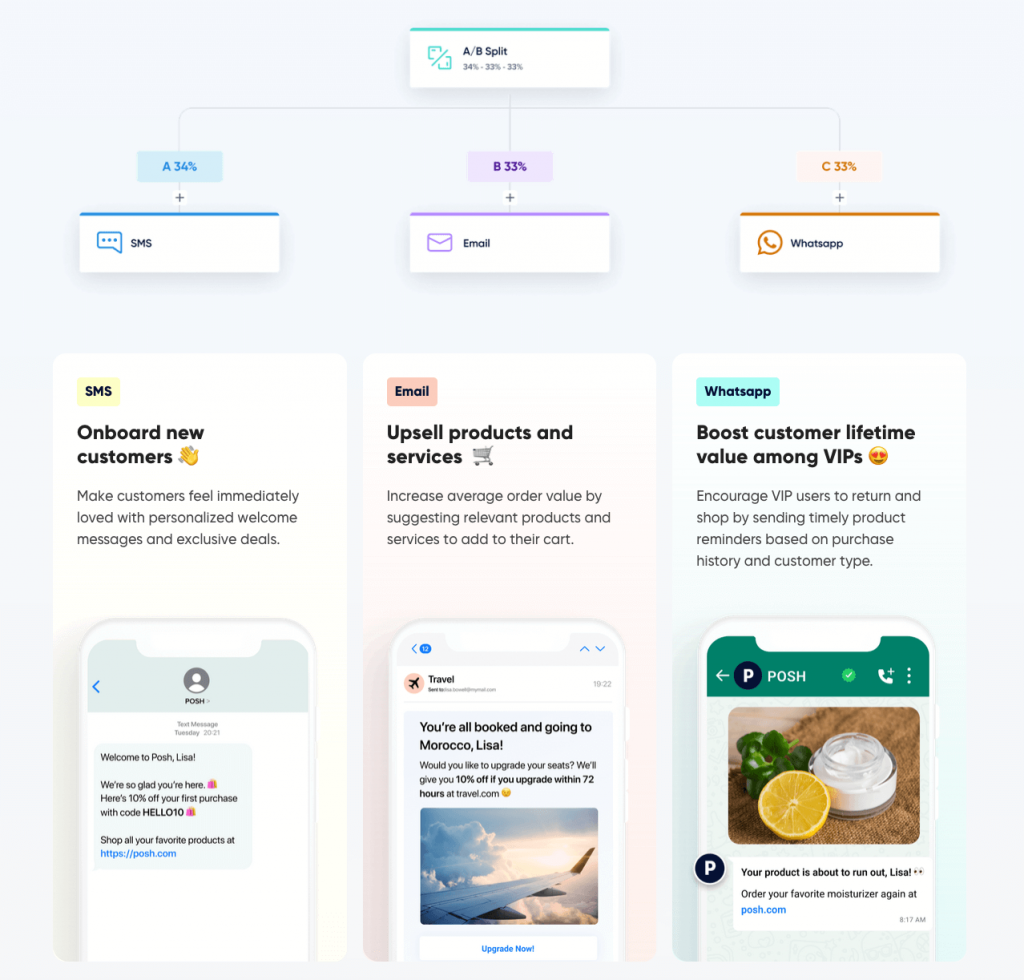
However, running multiple campaigns and A/B tests can be overwhelming. The process of figuring out what to test, setting up the experiments, analyzing the results, and adjusting the campaigns often takes hours of manual work.
Just like with segmentation, AI can do a lot of the heavy lifting for you. For instance, Insider’s A/B testing capabilities can analyze the results of your experiments and automatically guide users to the winning variants. You just need to select a winning metric (e.g., CAC, open rates, conversion rates) and a duration for each test to run.
The Gioi Di Dong — a leading Vietnamese retailer — used some of these A/B testing techniques to optimize a product page on their mobile website, which helped them increase revenue per session by 17%.
#4 Tailored product recommendations
Product recommendations are everywhere — from website landing pages to online ads, emails, push notifications, social media posts, and many other marketing message types.
If you want to convert leads who have high purchase intent, you need to maximize the impact of these recommendations by making them as personalized as possible.This can be done in a variety of ways using a good product recommendation engine. For example, you can create a carousel of products that should be relevant to each individual website visitor or email recipient, based on their needs, interests, and preferences.
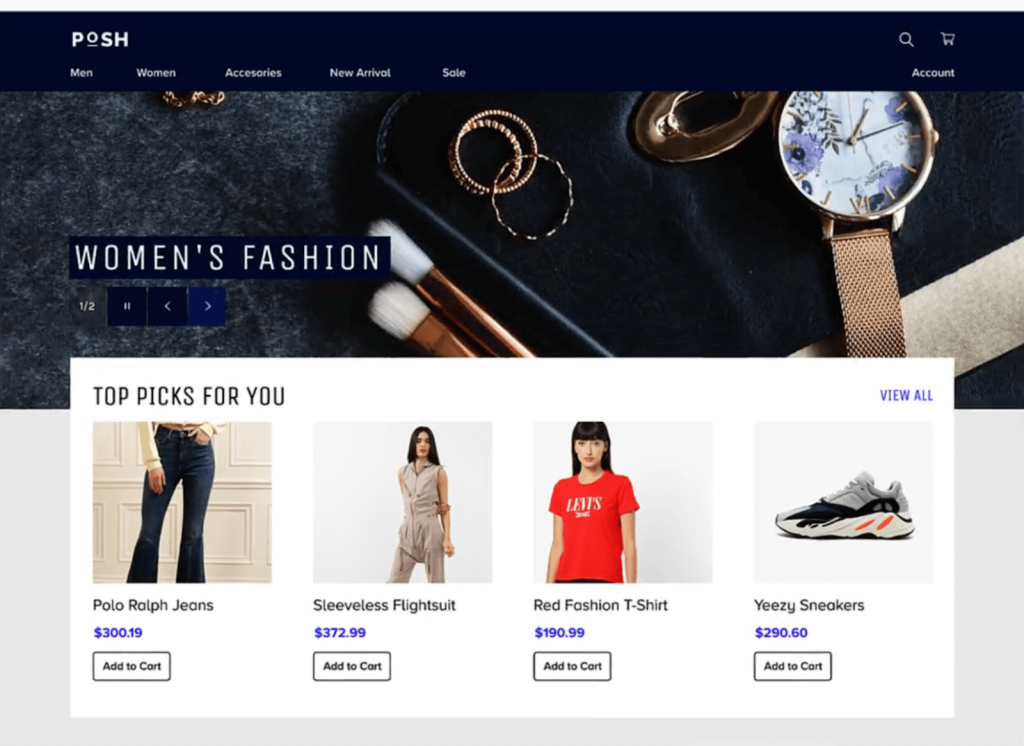
You can also use an advanced tool like our Smart Recommender to leverage a whole bunch of recommendation strategies — like location-based best sellers, product testimonials, frequently purchased together, and more. Plus, our Smart Recommender can mix and match these strategies and automatically determine which one yields the best results.
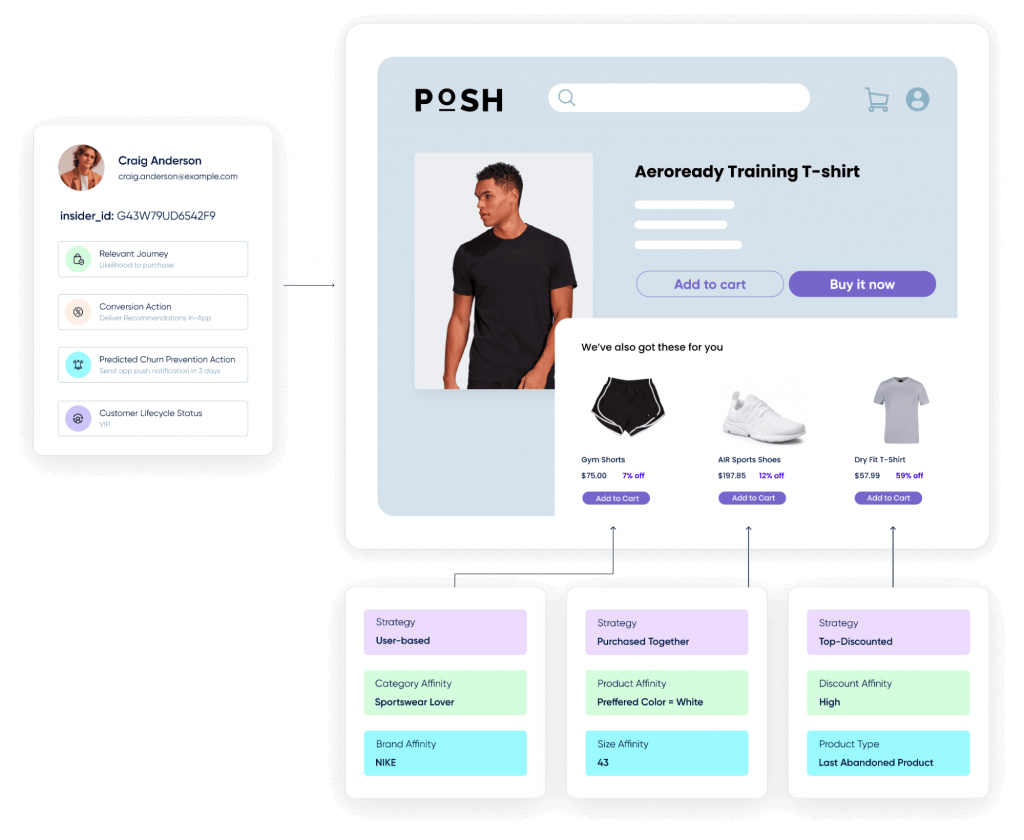
These personalization tactics ensure you’re making the most out of every product recommendation users see across your website, mobile app, emails, and other marketing channels. This has the potential to drastically lower the time and money it takes to convert visitors into paying customers.
For a real-life example, check out our case study with the jewelry brand Chow Sang Sang. The company’s marketing team used Insider to add different types of product recommendations across their site and A/B test them against each other. They also expanded their personalized recommendations to their emails to ensure all contacts receive relevant information, based on the interest they displayed on the website.
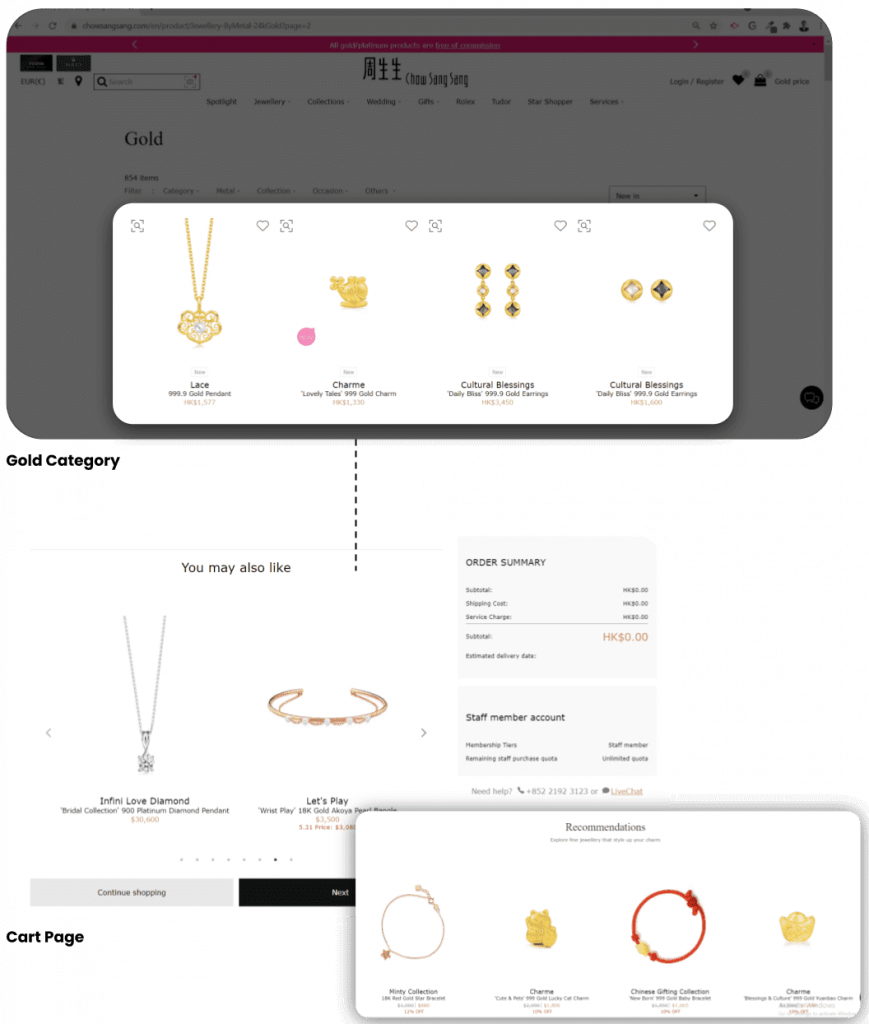
Chow Sang Sang’s website personalization efforts yielded a 10.5% conversion rate uplift, while the email campaigns delivered a 23.5% boost in conversions.
#5 Complete web and mobile personalization
Product recommendations are an essential part of optimizing your website or mobile app for high conversion rates and lower CAC. However, they’re not the only element of your site you can tailor to visitor’s preferences.
For example, you can rearrange how product categories are presented to ensure users find what they’re looking for easier and faster. Adidas used this strategy to remove the clutter in their mobile menus and highlight the most relevant categories. This led to a 50.3% increase in mobile conversion rates.
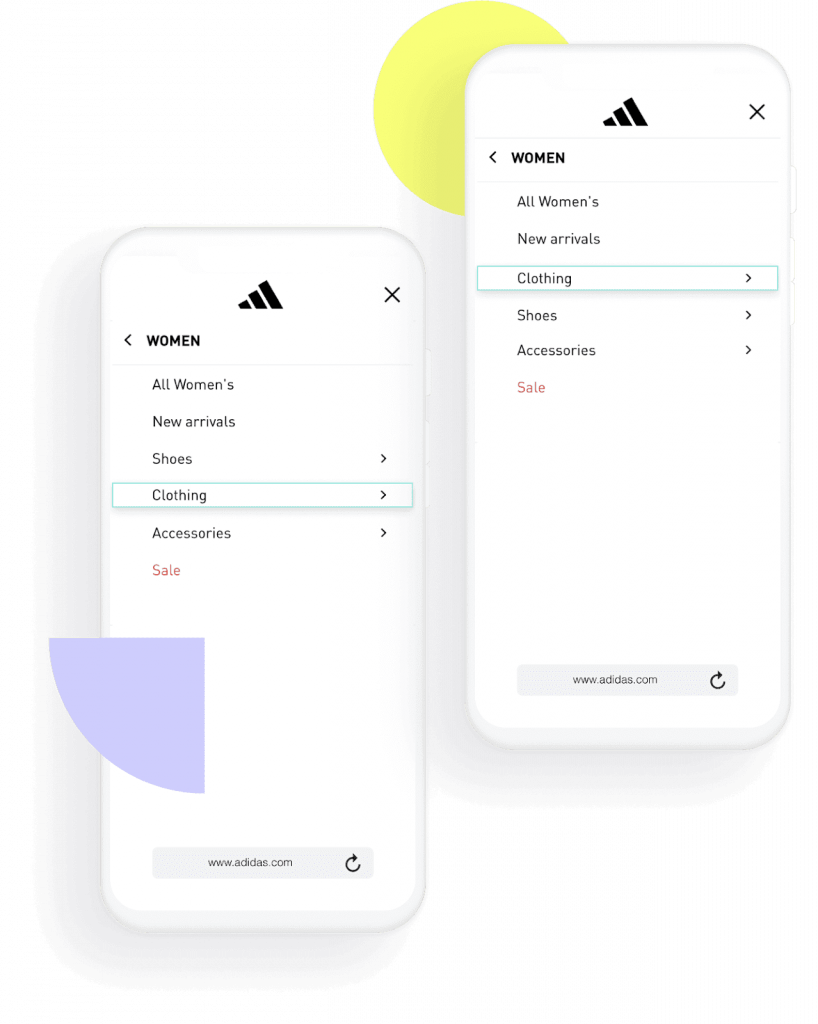
Another powerful mobile marketing strategy is to personalize the entire mobile home screen. This is especially important on smaller viewports, as potential customers can get overwhelmed and bounce if they can’t find what they need right away. Toyota used this strategy to optimize their mobile layouts based on users’ behaviors and interests, which led to a 54% increase in traffic to product pages and contributed to a 166% boost in test drive applications.
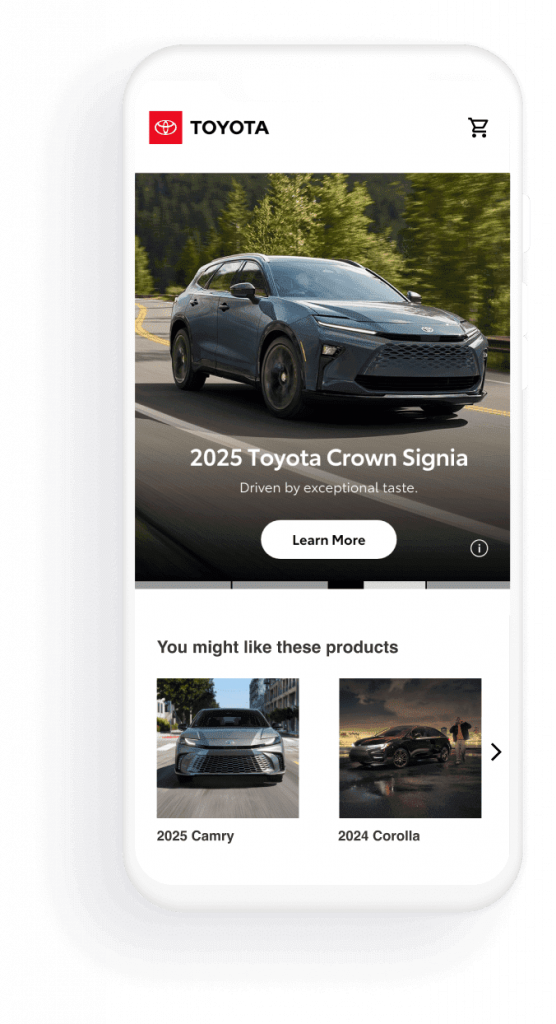
Lastly, an underutilized but powerful strategy is to add engaging, Instagram-like stories to your site or app with a tool like InStory. These stories can be personalized to each user who clicks on them, which is a great way to streamline product discovery and generate more sales from your existing traffic.
Dover Saddlery used these stories and other personalization techniques to accelerate product discovery and repurpose their Instagram content. This helped them drive $1.7 million in incremental revenue and achieve a 5% increase in conversion rates.
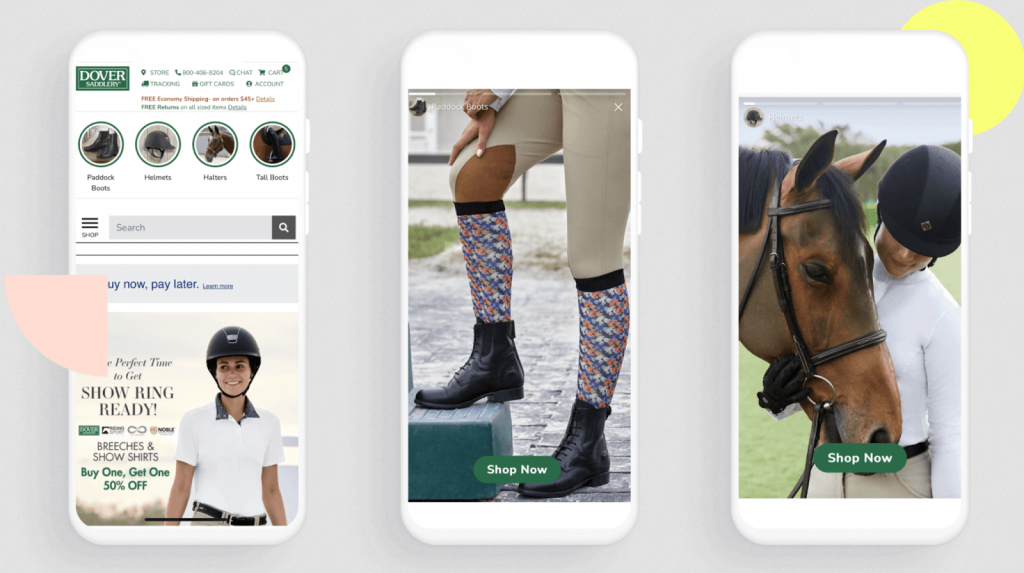
Put simply, personalizing as many website and mobile app elements as possible helps you convert more visitors faster, which ensures you’re maximizing your marketing spend and keeping CAC as low as possible.
For a deeper dive into this topic, check out our ultimate guide to website personalization.
#6 Anonymous visitor personalization
Anonymous visitor personalization is the process of tailoring the on-site experience to users who haven’t shared any contact information with you. This is crucial if you want to minimize CAC and maximize conversion rates, as the majority of traffic on many websites comes from anonymous users.
The process relies on gathering information about anonymous visitors’ website behaviors, i.e., the pages they visit, the products they browse, and the items they add to their carts. Armed with this data, you can tailor the website experience in real-time.
To do that, you need a customer data platform (CDP) and personalization solution like Insider that can:
- Gather, store, and organize data about users’ website activities.
- Leverage that data to deliver personalized product recommendations in real-time.
- Send tailored web push notifications to get visitors back to your website. Push notifications don’t require any personal information and there’s no additional cost for sending each one. This makes them ideal for converting more visitors in a cost-effective way.
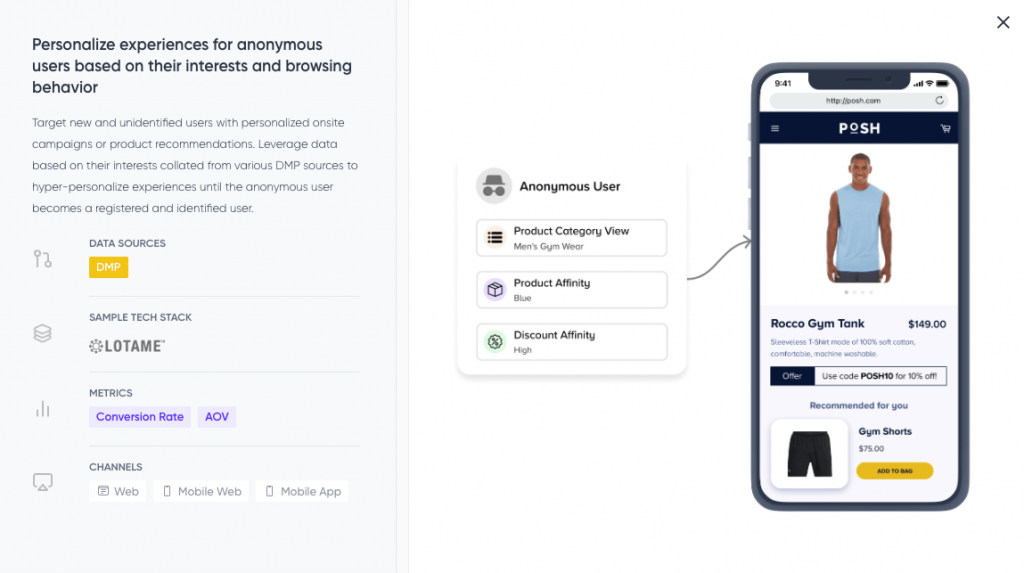
When done right, anonymous visitor personalization streamlines the path to purchase by showing users relevant products and messaging, based on their interests. This helps increase conversion rates and minimize CAC.
You can see the power of these techniques in our case study with Spotlight Retail Group.
This brand used our platform’s CDP, Web Suite, and Smart Recommender to track and analyze each visitor’s discount affinity, conversion potential, purchasing patterns, lifecycle stage, brand interactions, and more.
Then, they used that data to deliver a personalized experience and send highly-targeted web push notifications to every user, even when they weren’t browsing the website. The result was a massive 37x ROI in less than a year and an 80% reduction in campaign launch time.
#7 Funnel optimization
Funnels map out sequences of steps users take to complete a goal — like purchasing a product, completing an onboarding sequence, or subscribing to a newsletter.
Building and analyzing funnels for your most important flows helps you see where users drop off. This means you can easily find which areas of the sales funnel are causing drops in conversion rates and potentially leading to higher CAC.For that, you need a customer journey analytics software that lets you build multi-step, event-based funnels. Once you’ve added the funnel steps, the software should show you how many users go through each one and where most drop-offs occur.
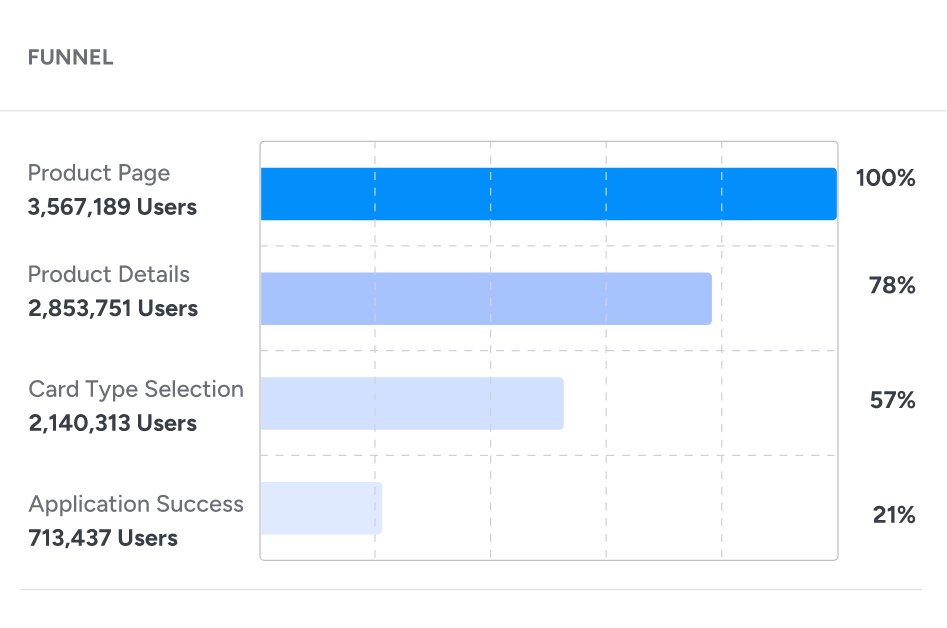
From here, you know where to focus your efforts to reduce drop-offs and optimize conversion rates. Lenovo and by.U are two companies that used this process to improve the user experience across essential flows:
- Lenovo’s marketing team found that many users left their website during the lengthy process of building their PC. To fix that, our team recommended they use customized page configuration for returning visitors who left mid-process. When returning, these visitors found their choices had been automatically saved, which boosted Lenovo’s add-to-cart click rate by 8.6%.
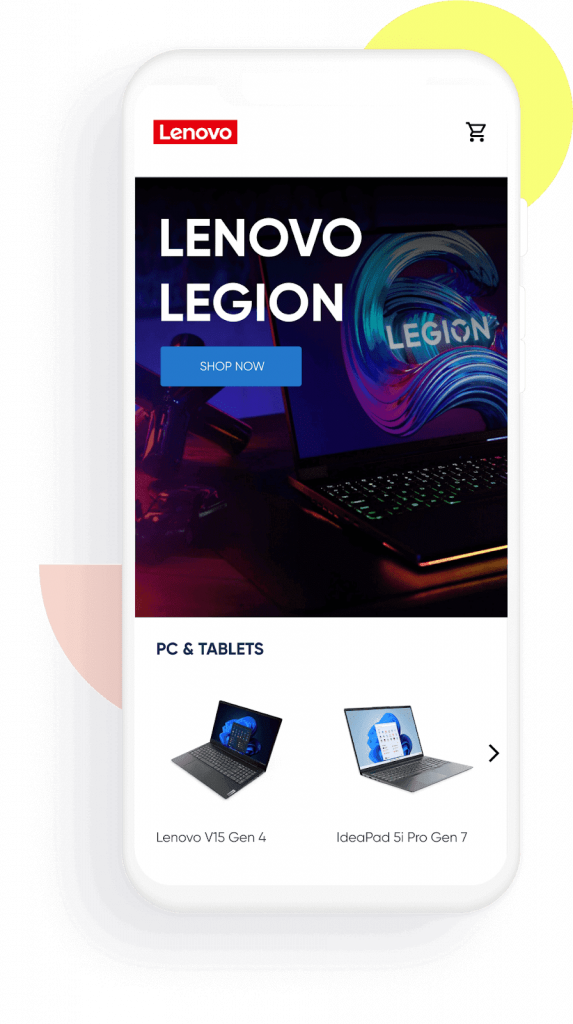
- by.U faced various problems during their onboarding process, resulting in a big gap between the number of users who started it and those who finished it. To fix that, they used our marketing automation platform in combination with app surveys to deliver personalized messaging. This resulted in a smoother, more engaging experience, leading to 19x higher open rates compared to their normal pushes.
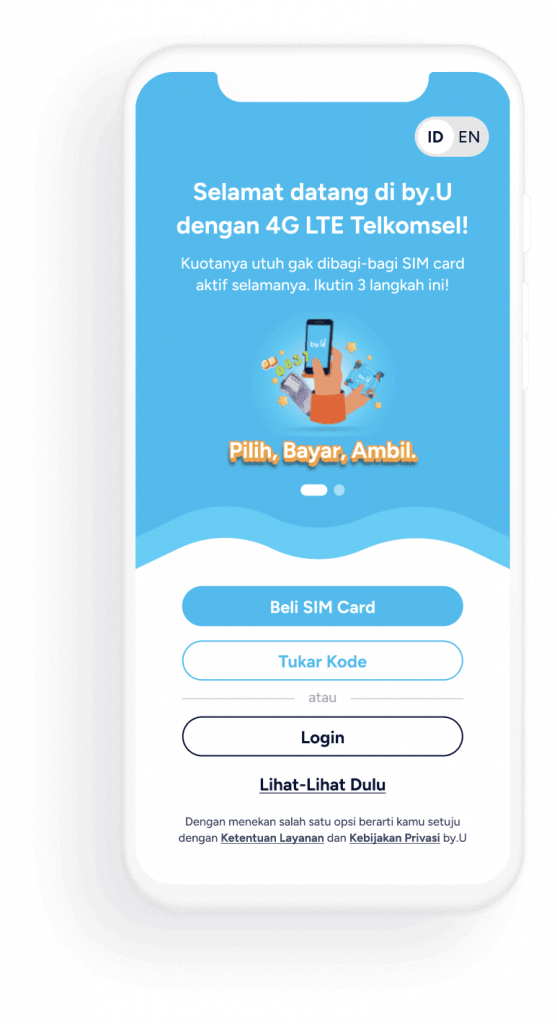
#8 Improve customer retention and loyalty
Loyalty programs offer rewards and special incentives for a customer’s repeat business — like providing a discount or early access to new releases to existing customers who buy five products.
Creating more loyal customers is vital for two reasons:
- Retaining customers is much cheaper than acquiring new ones, making it a much more sustainable growth engine.
- Repeat customers generate much more revenue, despite being a smaller part of the total customer base for most brands.
Besides loyalty programs, personalizing the customer experience plays a big role in improving retention. The better you understand your customers, the more you can tailor each touchpoint with your brand, including your website, emails, and online ads, to their preferences.
Note: We explore the importance and principles of fostering long-term, profitable customer relationships in our guide to lifecycle marketing.
Loyalty and referral programs also serve an important function when it comes to lowering CAC — they can incentivize your current customers to attract new ones. This is a similar process to affiliate marketing, only your most loyal customers are doing the marketing for you (instead of 3rd-party influencers).
For example, many eCommerce brands offer free shipping or discounts for customers who refer leads to the brand.
When done right, this strategy can have a massive impact on CAC, as you’re not spending money on reaching potential customers via expensive PPC ads, emails, or other paid promotions. Instead, you’re offering an incentive to loyal customers (who are already generating a lot of revenue) to attract new ones at a lower cost.
Reduce customer acquisition costs across all channels with Insider
Insider can help you drastically reduce CAC across various channels and marketing strategies.
Our platform lets you tailor every touchpoint — including your website, mobile app, emails, push notifications, and messaging channel communications — to each user’s needs, interests, and preferences. This helps you convert visitors to customers much faster and cheaper, as well as improve other key metrics like CPA, AOV, and LTV.
In a nutshell, Insider helps midsized and enterprise brands:
- Unify their marketing stack, streamline workflows, and make the most out of their marketing spend.
- Increase conversions, engagement, and revenue by sending the right messages to the right target audiences, on the right channels, at the right times.
- Build, automate, and personalize campaigns across 12+ channels, like on-site, email, web push, SMS, WhatsApp, site search, and more.
- Easily connect to the rest of their marketing stack (e.g., CRMs, analytics tools, customer service platforms, and more) and even use a new platform as a single source of truth for all customer data.
- Use proven templates to get started quickly with any use case — from generating leads with the help of gamification to automating cross-channel cart abandonment journeys or cross-sell campaigns.
Click here to book a demo with our team and learn how Insider can help you reach your business goals.



















